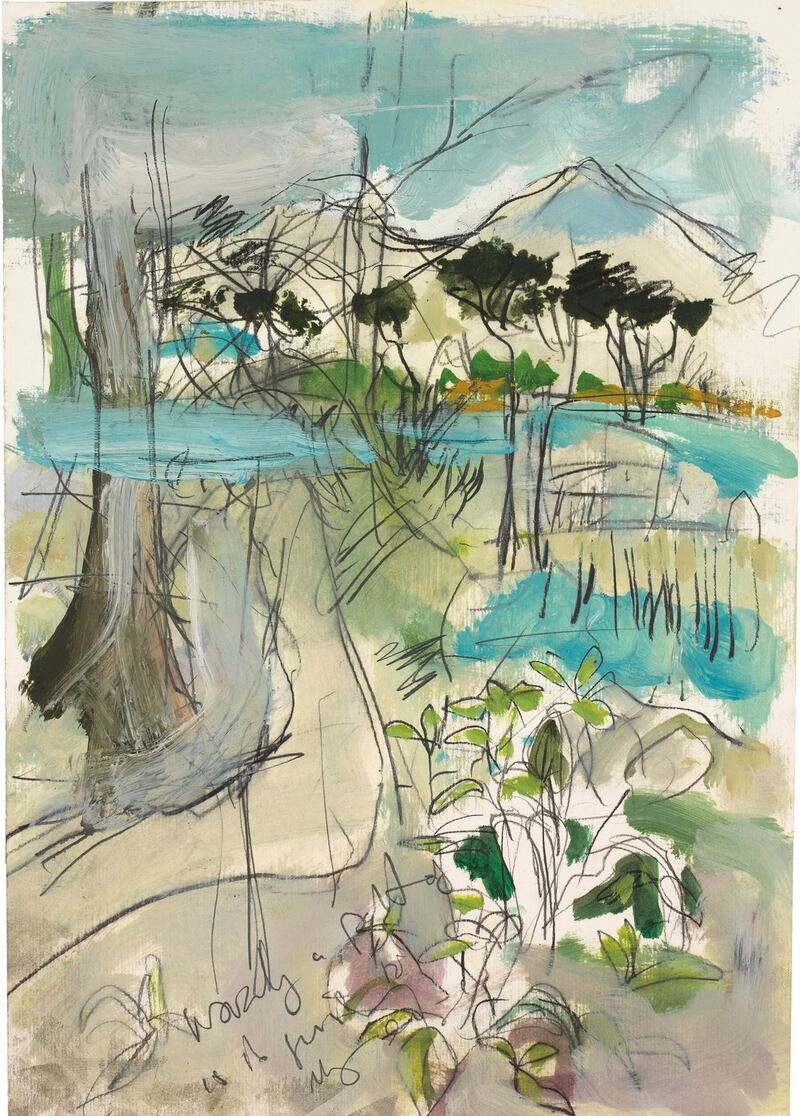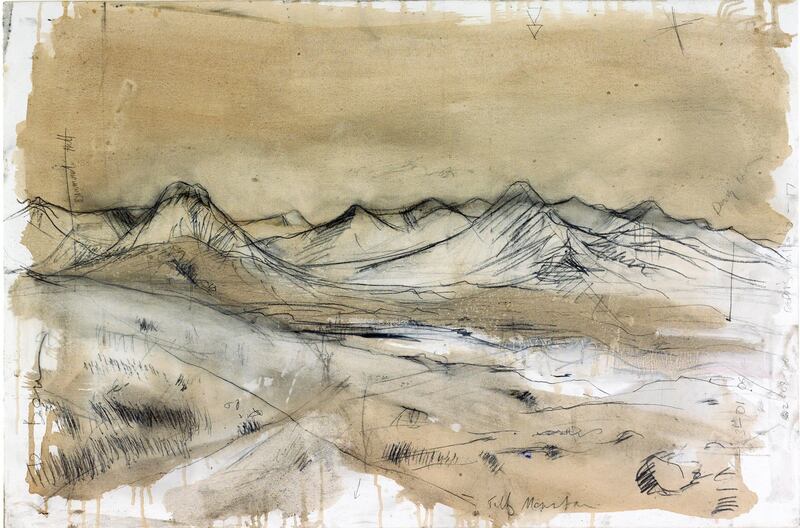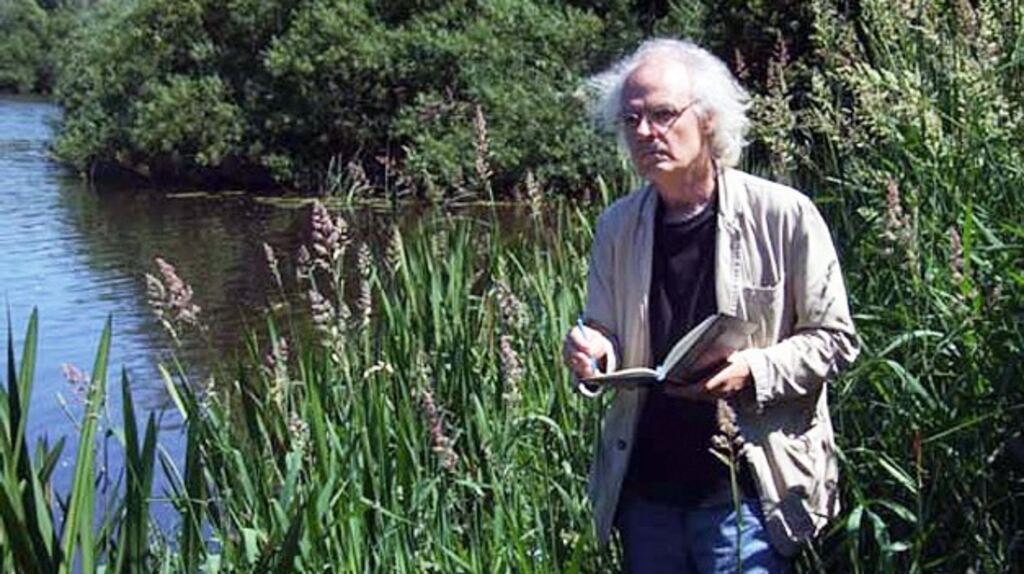Born: December 20th, 1950
Died: July 28th, 2021
Prompted to write about his work in 2009, David Lilburn concisely summed up his approach in the first sentence: “I like to make what you could call walking drawings.” From the mid-1970s onwards he developed and mastered an informal, dynamic means of image-making. A perpetual walker, or wanderer, he drew constantly, filling pocket-sized sketchbooks and later, back in the studio, much larger sheets with fast, incisive visual accounts of the people, places and things around him. Impromptu notes, maps, asides, diagrams, collaged fragments and revisions were all part of the process. He never had in mind some subsequent, photographically correct, conventional version of a scene, such as a traditional, academic painting. The whole point was to honestly and directly reflect his experience of the transient moment in context. There is something giddily liberating and egalitarian about that, and these qualities come through powerfully in his work.


Unusually enough, while he habitually and adeptly used oil paint, watercolour and coloured inks, drawing was the real core of his art, extending naturally into intaglio print methods that suited his visual fluency and tremendous graphic ability. The finished works could be starkly spare and linear or, at the other extreme, tonally rich and dense with layer upon layer of detailed information and allusion, but always retaining an air of engaging informality.
Get lost
They could be intimately personal, as with numerous, rapt studies of his infant son Caspar and immediate domestic life, for example, or expansively iconic, as with his brilliant panoramic view of The Twelve Bens in 2009, or his epic, labyrinthine exploration of the 17th-century city in A Prospect of Limerick from 1998, or the drypoints that make up In Media Res, seven immersive dives into Dublin districts that feature prominently in Joyce’s Ulysses, commissioned for the 100th anniversary of Bloomsday. These works don’t just take you on a journey, as one commentator astutely observed, they get you “thoroughly and enjoyably lost”.
The artist’s complex personality – quiet but also extremely sociable and lively, intensely curious, watchful and scrupulously non-judgmental, always with a glint of mischief – unfailingly comes through in the work. It is perhaps unsurprising that, musically, he had a deep appreciation of jazz, and he played the saxophone.
He was born in Limerick to Florence (nee Armstrong) and Stuart Lilburn, the eldest of three brothers. He attended Newtown School in Waterford. Initially he went on to study history and political science at Trinity College Dublin, before attending a summer course in lithography at the Scuole D’Arte in Urbino (his decisive introduction to printmaking) and then, back home, the Limerick School of Art And Design. He quickly established himself as a formidable if irreverent graphic artist, exhibiting extensively and winning several awards. Still, it’s fair to say that because he worked primarily in the area of print, and because what he did was to a large degree sui generis, it took some time for the art world to catch up with him, though eventually it did.
Limerick’s influence
Working on contract as a graphic designer in Eindhoven in 1977, he met Romanie van Son. Back in Ireland two years later, they lived in several western locations before settling in Limerick city, directly on the Shannon. Lilburn later noted that moving into the city prompted a significant shift in emphasis in his work, from landscape per se to urban map drawings – though he never gave up on the natural landscape.
As resident graphic artist at the University of Limerick for many years he worked on numerous graphic design and related projects across multiple departments. With friend and fellow artist Jim Savage he established Occasional Press, a publishing imprint, in 2006. For some years they pursued an exciting collaboration with Ballynahinch Castle Hotel in Connemara, involving projects with poets Peter Fallon and Tony Curtis, and artists Dorothy Cross, Donald Teskey and many more. Lilburn’s own beautiful volume, Walking Drawing Making Memory, comprising works made in response to the Connemara landscape, was published in 2009. Occasional Press also published an anthology of John Berger’s writings on drawing and more recently photographer Jean Mohr’s remarkable visual biography of Berger, John by Jean.
Exceptionally industrious, and usually juggling several projects and plans at once, Lilburn completed numerous commissions over the years and his work is included in many collections, public and private.
David Lilburn is survived by his widow Romanie van Son, sons Jonathan and Caspar, son-in-law Adrian, his brothers Hugh and Gary and their families













